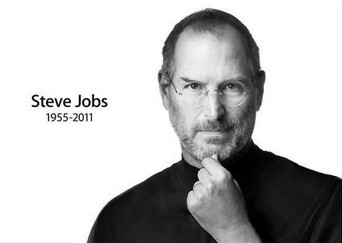The Blue Box
藍盒子
The ultimate combination of pranks and electronics—and the escapade that helped to create Apple—was launched one Sunday afternoon when Wozniak read an article in Esquire that his mother had left for him on the kitchen table. It was September 1971, and he was about to drive off the next day to Berkeley, his third college. The story, Ron Rosenbaum’s “Secrets of the Little Blue Box,” described how hackers and phone phreakers had found ways to make long-distance calls for free by replicating the tones that routed signals on the AT&T network. “Halfway through the article, I had to call my best friend, Steve Jobs, and read parts of this long article to him,” Wozniak recalled. He knew that Jobs, then beginning his senior year, was one of the few people who would share his excitement.
惡作劇與電子技術(shù)的終極結(jié)合——也是促成蘋果公司成立的瘋狂表演——在一個周日的下午啟動了,當(dāng)時沃茲尼亞克看到了母親給他留在廚房桌子上的《君子》(Esquire)雜志上的一篇文章。當(dāng)時是1971年的9月,他正準(zhǔn)備第二天出發(fā)去伯克利,他的第三所大學(xué)。那篇文章——羅恩·羅森鮑姆(RonRosenbaum)寫的《小藍盒的秘密》——描繪了黑客和電話飛客是如何通過模擬AT&T(美國電話電報公司)網(wǎng)絡(luò)上接通線路的特定音頻免費撥打長途電話的。“這篇長文剛讀到一半的時候,我就給我最好的朋友喬布斯打電話,然后讀了一部分給他聽。”沃茲尼亞克回憶說。他知道,那時候已經(jīng)開始讀高中四年級的喬布斯一定也會非常興奮。
A hero of the piece was John Draper, a hacker known as Captain Crunch because he had discovered that the sound emitted by the toy whistle that came with the breakfast cereal was the same 2600 Hertz tone used by the phone network’s call-routing switches. It could fool the system into allowing a long-distance call to go through without extra charges. The article revealed that other tones that served to route calls could be found in an issue of the Bell System Technical Journal, which AT&T immediately began asking libraries to pull from their shelves.
 文中有一個關(guān)鍵人物:約翰·德雷珀(JohnDraper),他是一名黑客,外號“咔嚓船長①”,這是因為,他發(fā)現(xiàn)早餐麥片附贈的哨子發(fā)出的聲音與電話網(wǎng)絡(luò)中用以傳輸呼叫的開關(guān)發(fā)出的音頻是一樣的,都是2600赫茲。這樣就可以騙過系統(tǒng),允許長途電話接通,而不產(chǎn)生額外的費用。文章中還提到,其他一些可以作為內(nèi)部線路控制的單音頻信號的信息,可以在《貝爾系統(tǒng)技術(shù)期刊》中找到。而AT&T公司立刻要求各地圖書館將這本期刊下架。
文中有一個關(guān)鍵人物:約翰·德雷珀(JohnDraper),他是一名黑客,外號“咔嚓船長①”,這是因為,他發(fā)現(xiàn)早餐麥片附贈的哨子發(fā)出的聲音與電話網(wǎng)絡(luò)中用以傳輸呼叫的開關(guān)發(fā)出的音頻是一樣的,都是2600赫茲。這樣就可以騙過系統(tǒng),允許長途電話接通,而不產(chǎn)生額外的費用。文章中還提到,其他一些可以作為內(nèi)部線路控制的單音頻信號的信息,可以在《貝爾系統(tǒng)技術(shù)期刊》中找到。而AT&T公司立刻要求各地圖書館將這本期刊下架。
As soon as Jobs got the call from Wozniak that Sunday afternoon, he knew they would have to get their hands on the technical journal right away. “Woz picked me up a few minutes later, and we went to the library at SLAC [the Stanford Linear Accelerator Center] to see if we could find it,” Jobs recounted. It was Sunday and the library was closed, but they knew how to get in through a door that was rarely locked. “I remember that we were furiously digging through the stacks, and it was Woz who finally found the journal with all the frequencies. It was like, holy shit, and we opened it and there it was. We kept saying to ourselves, ‘It’s real. Holy shit, it’s real.’ It was all laid out—the tones, the frequencies.”
那個周日的下午,喬布斯接到沃茲的電話后,立刻意識到他們必須馬上找到那本技術(shù)期刊。“幾分鐘之后沃茲就來接我,我們?nèi)チ怂固垢4髮W(xué)線性加速器中心的圖書館,想看看能不能找到。”喬布斯回憶道。那天是周日,圖書館關(guān)門了,但他們穿過一扇很少上鎖的門進到了里面。“我記得我們在書架上猛翻,最后是沃茲找到了那本期刊,上面有所有的頻率。那種感覺簡直就是‘天哪!’我們翻開它,所有信息都有。我們一直對自己說:‘這是真的,天哪!這是真的!’所有信息都寫得清清楚楚——音調(diào),頻率。”
Wozniak went to Sunnyvale Electronics before it closed that evening and bought the parts to make an analog tone generator. Jobs had built a frequency counter when he was part of the HP Explorers Club, and they used it to calibrate the desired tones. With a dial, they could replicate and tape-record the sounds specified in the article. By midnight they were ready to test it. Unfortunately the oscillators they used were not quite stable enough to replicate the right chirps to fool the phone company. “We could see the instability using Steve’s frequency counter,” recalled Wozniak, “and we just couldn’t make it work. I had to leave for Berkeley the next morning, so we decided I would work on building a digital version once I got there.”
那天晚上,沃茲尼亞克在森尼韋爾電子商店關(guān)門之前跑了過去,買到了制造模擬聲音發(fā)生器需要的零部件。喬布斯之前在惠普探索者俱樂部的時候就傲過一個頻率計數(shù)器,他們用這個計數(shù)器來調(diào)校他們需要的聲音。只要一撥號,他們就能復(fù)制并錄下文章中指定的聲音。到了午夜,他們準(zhǔn)備好測試了。很不幸,他們使用的振蕩器不夠穩(wěn)定,無法準(zhǔn)確復(fù)制能夠騙過系統(tǒng)的聲音。“我們使用史蒂夫的頻率計數(shù)器可以發(fā)現(xiàn)振蕩器的不穩(wěn)定性,”沃茲尼亞克說,“但就是沒辦法讓它工作。我第二天一早就要去伯克利了,所以我們決定,等我到那兒之后,就著手制造一個數(shù)字版的藍盒子。”
No one had ever created a digital version of a Blue Box, but Woz was made for the challenge. Using diodes and transistors from Radio Shack, and with the help of a music student in his dorm who had perfect pitch, he got it built before Thanksgiving. “I have never designed a circuit I was prouder of,” he said. “I still think it was incredible.”
從未有人做過數(shù)字版的藍盒子,但沃茲生來就是迎接挑戰(zhàn)的。他從電器連鎖店RadioShack買來二極管和晶體管,在同宿舍一個擁有完美音準(zhǔn)感的學(xué)生的幫助下,在感恩節(jié)之前就完成了制作。“這是我設(shè)計過的最讓我自豪的電路,”他說,“直到今天我仍然覺得難以置信。”
One night Wozniak drove down from Berkeley to Jobs’s house to try it. They attempted to call Wozniak’s uncle in Los Angeles, but they got a wrong number. It didn’t matter; their device had worked. “Hi! We’re calling you for free! We’re calling you for free!” Wozniak shouted. The person on the other end was confused and annoyed. Jobs chimed in, “We’re calling from California! From California! With a Blue Box.” This probably baffled the man even more, since he was also in California.
一天晚上,沃茲尼亞克從伯克利驅(qū)車前往喬布斯家中測試藍盒子。他們想打給沃茲在洛杉磯的叔叔,但是弄錯了電話號碼。不過這無關(guān)緊要,因為這套裝置終于可以使用了。“嗨!我們正在免費給你打電話!我們正在免費給你打電話!”沃茲尼亞克大喊著。電話那頭兒的人有點兒摸不著頭腦,也有點兒不耐煩。喬布斯插話了:“我們正在加利福尼亞給你打電話!在加利福尼亞給你打電話!用一只藍盒子給你打電話!”這番話很可能讓對方更加困惑了,因為他也在加利福尼亞。











